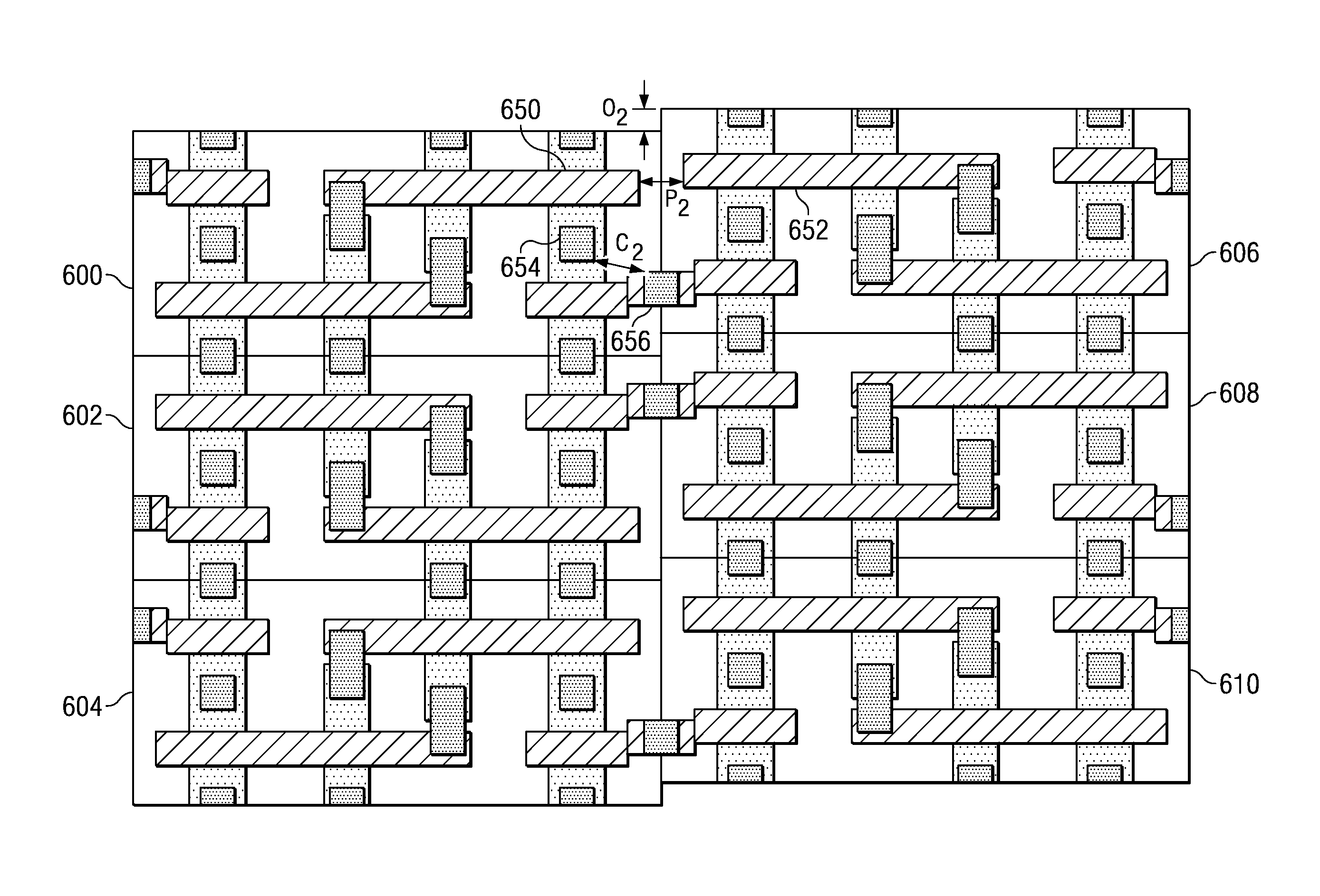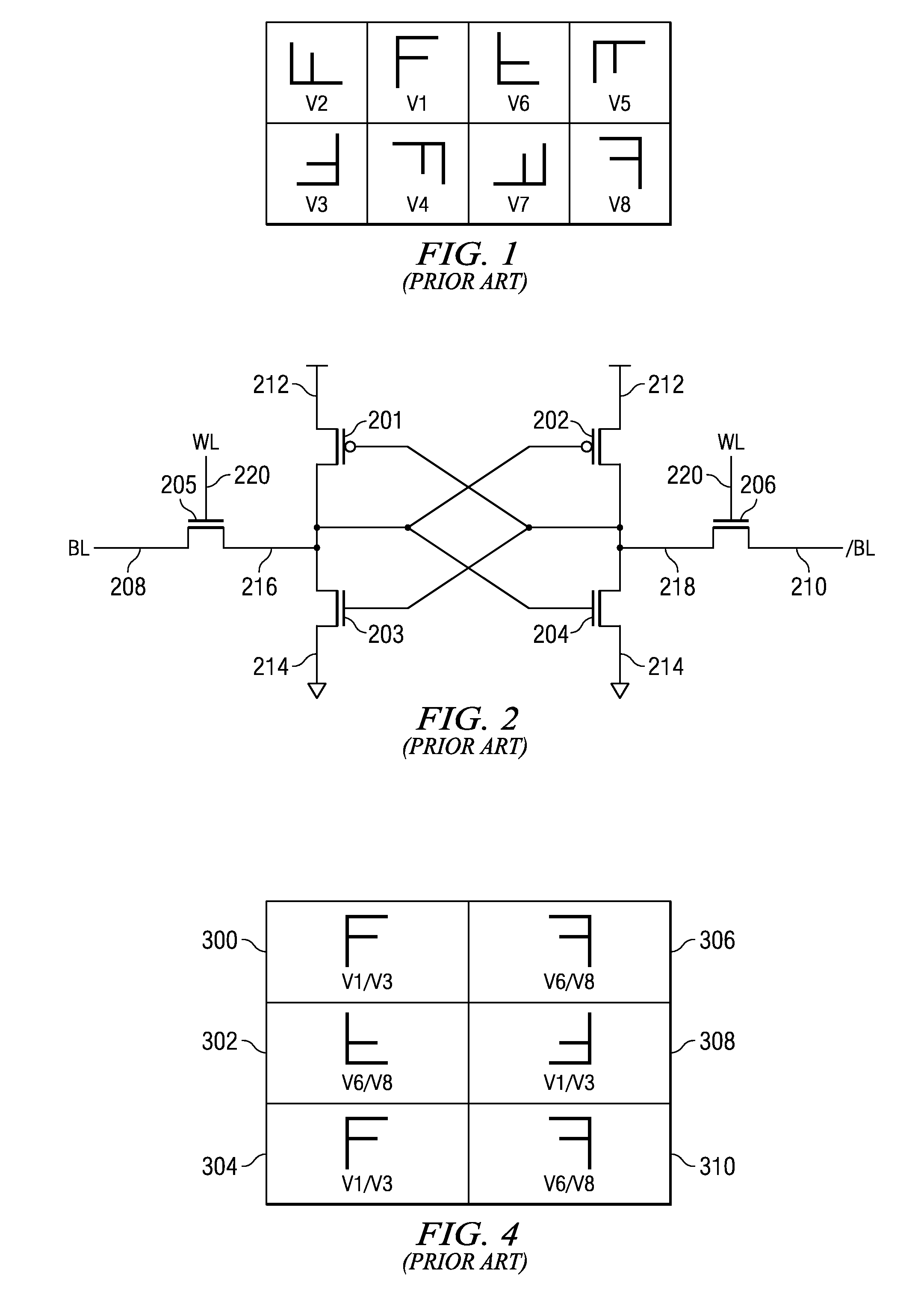Staggered memory cell array
a memory cell array and staggered technology, applied in the field of electromechanical circuits, can solve the problems of limited state-of-the-art fabrication equipment, limited geometric feature size and space reduction of semiconductor integrated circuits, and significant challenges for manufacturers of portable electronic devices, so as to reduce the size of arrays, reduce cell size, and increase critical distances
- Summary
- Abstract
- Description
- Claims
- Application Information
AI Technical Summary
Benefits of technology
Problems solved by technology
Method used
Image
Examples
Embodiment Construction
[0030]Referring to FIG. 17, there is a block diagram of a wireless telephone as an example of a portable electronic device which could advantageously employ this invention in memory arrays, decode circuits, interconnect cells, or any other geometrical array as is known in the art. The wireless telephone includes antenna 1700, radio frequency transceiver 1702, baseband circuits 1710, microphone 1706, speaker 1708, keypad 1720, and display 1722. The wireless telephone is preferably powered by a rechargeable battery (not shown) as is well known in the art. Antenna 1700 permits the wireless telephone to interact with the radio frequency environment for wireless telephony in a manner known in the art. Radio frequency transceiver 1702 both transmits and receives radio frequency signals via antenna 1702. The transmitted signals are modulated by the voice / data output signals received from baseband circuits 1710. The received signals are demodulated and supplied to baseband circuits 1710 as ...
PUM
 Login to View More
Login to View More Abstract
Description
Claims
Application Information
 Login to View More
Login to View More - R&D
- Intellectual Property
- Life Sciences
- Materials
- Tech Scout
- Unparalleled Data Quality
- Higher Quality Content
- 60% Fewer Hallucinations
Browse by: Latest US Patents, China's latest patents, Technical Efficacy Thesaurus, Application Domain, Technology Topic, Popular Technical Reports.
© 2025 PatSnap. All rights reserved.Legal|Privacy policy|Modern Slavery Act Transparency Statement|Sitemap|About US| Contact US: help@patsnap.com



